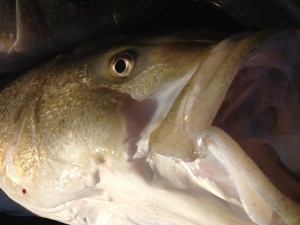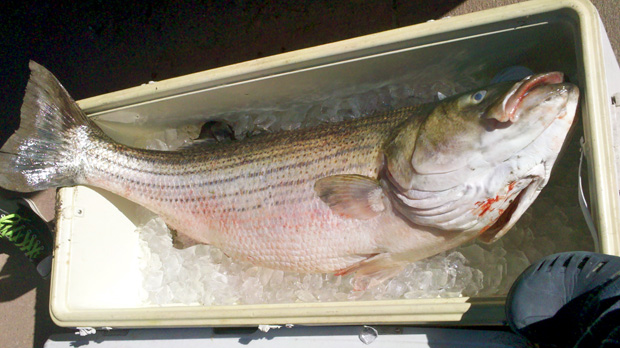Getting fishermen to agree on anything can be harder than trying to catch eels barehanded.
[dropcap]B[/dropcap]ut on one topic, there is little trouble finding a consensus: The striped bass population is in deep trouble. What is harder to find is agreement on the cause of the dearth of stripers.
Writing in this month’s issue of Fly Fishing in Salt Water magazine, Connecticut resident and saltwater fly fishing pioneer Lou Tabory probes for answers to the question: “Where have all the stripers gone and how can we get them back?” Tabory tells of how stripers were his first fishing experience. Using a light spinning rod and an Uppermen Bucktail, he caught his first bass nearly 60 years ago. Ten years later, also using freshwater equipment, he caught his first bass on a fly rod. Since then, he has written a couple of books on the subject and pursued the striped bass all over the Northeast with Cape Cod’s outer beaches one of the most frequently visited areas. One of the things that made striper fishing so popular was that the fish could be caught in such a wide variety of conditions: in the surf, along rocky shores or in deeper water from boats.
 The sport of striper fishing grew along with Tabory. Even the catastrophic collapse of the striper fishery in the 1980s proved to be only a temporary setback, he says. Thanks to some strict management measures, by the 1990s and into the early 2000s, the fishery was thriving again.
The sport of striper fishing grew along with Tabory. Even the catastrophic collapse of the striper fishery in the 1980s proved to be only a temporary setback, he says. Thanks to some strict management measures, by the 1990s and into the early 2000s, the fishery was thriving again.
But sometime around 2005, anglers again began to notice a decline in the striped bass fishery. This time, however, it was not the sudden drop-off and recovery of the 1980s. This time the decline has stuck. Today the once-great striper fishing that existed in virtually all parts of the Northeast coastline is greatly diminished, Tabory writes. Great striper fishing still exists in places like the New Jersey Shore, Montauk, Rhode Island and Maine, but elsewhere the striper fishing is off.
Tabory says that his beloved outer beaches of Cape Cod and the island of Nantucket and Martha’s Vineyard are the hardest hit with the situation worsened there by the influx of thousands of federally protected seals that keep stripers away from inshore waters.
While he sites a variety of actors that play in the decline in striper numbers, Tabory pins the failure of the bass to come onto the flats and into the surf squarely on a single basic factor: fewer fish.
The Atlantic States Marine Fishing Commission “is turning a blind eye” toward the striper situation, Tabory charges, “often siding with commercial interests.” He is critical of the current system of allowing anglers to take two fish of over 28 inches, pointing out that all large stripers are female breeders. Admitting that it would be hard to sell for commercial interests, he nonetheless advocates a return to a slot limit that allows taking one or two fish per day of 22 to 26 inches, but protects breeder stripers from 28 to 48 inches.
Tabory says that the best solution would be to make the striped bass a protected game fish, but that, he fears, would only happen if “we lose the great game fish one more time.”
Email: cwalsh@ctpost.com / Click here to go to website […]



